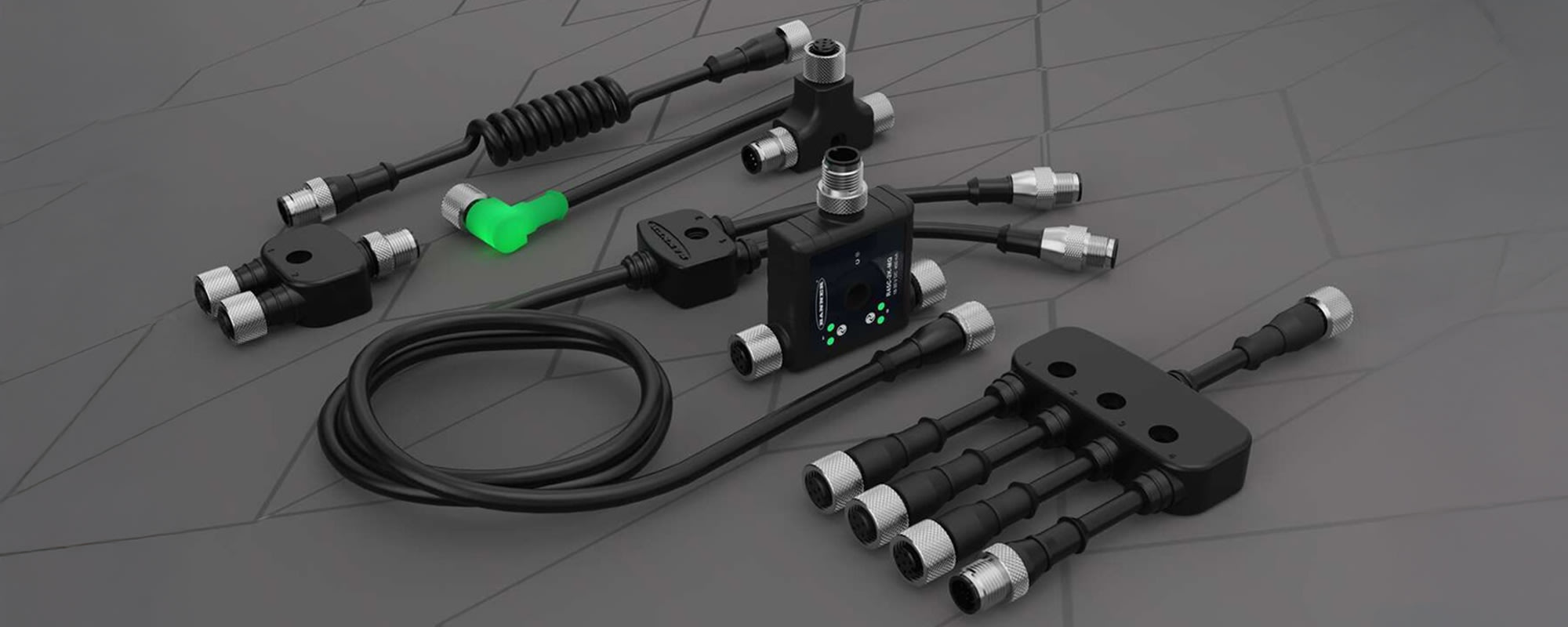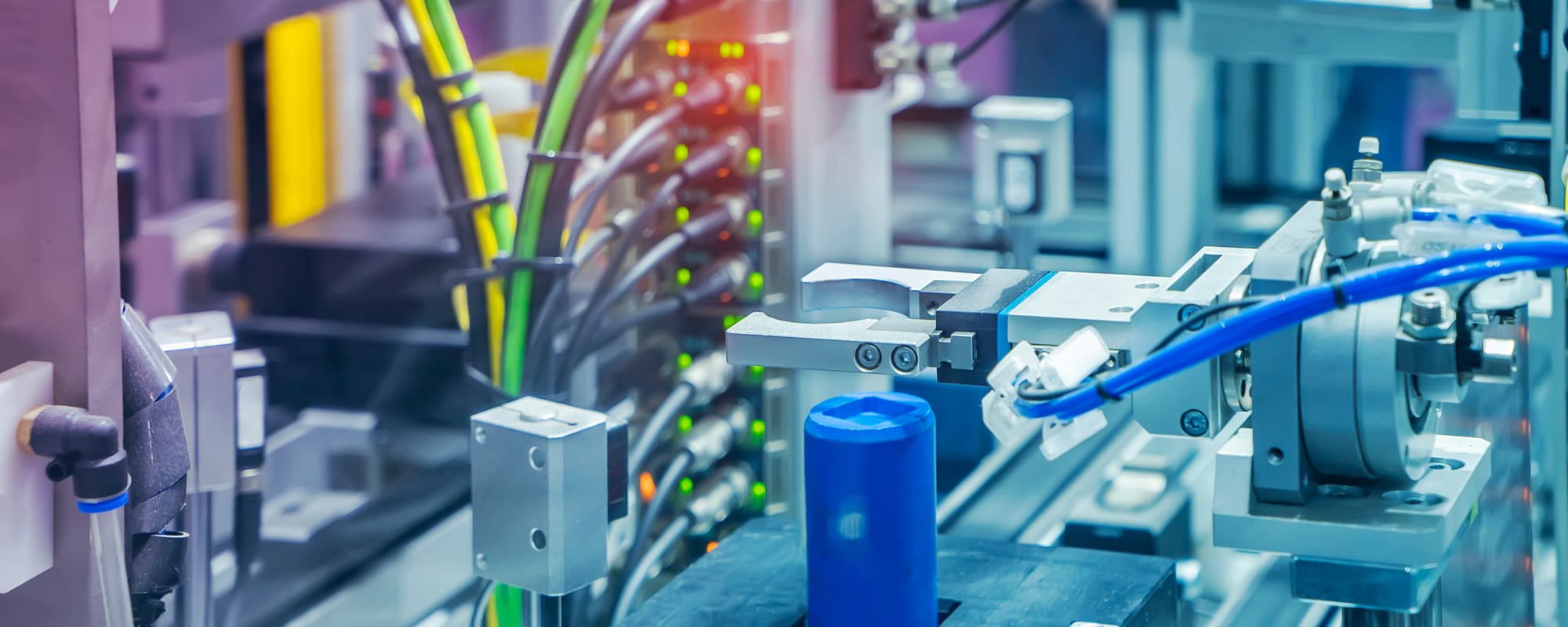Richard Jennens, Senior Offer Manager – Drive Solutions, Industrial Automation at Schneider Electric, deep dives into variable speed drives (VSDs), addressing benefits, common selection and implementation challenges, and Schneider Electric’s Altivar Solar ATV320 VSDs.

The global market for variable speed drives (VSDs) — which are also commonly referred to as variable frequency drives (VFDs) and adjustable frequency drives (AFDs) — was valued at $32.3 billion in 2024 and is projected to grow to a value of $48.7 billion by 2033.
This growth is largely due to the influence of the industrial automation, IIoT, energy efficiency, and renewable energy megatrends on the industrial manufacturing, oil and gas, HVAC, and utilities industries and VSD advantages like dynamic torque control, adjustable speed control, and remote monitoring capabilities.
We spoke to Richard Jennens, Senior Offer Manager – Drive Solutions, Industrial Automation at Schneider Electric, to learn more. Here, Richard deep dives into VSDs, addressing the benefits behind their popularity, the difference between standard and solar drives, common selection and implementation challenges and how to solve for them, the Schneider Electric difference, and the new Altivar Solar ATV320 VSDs.
Q1. Hi Richard. Please introduce yourself and tell us a little about Schneider Electric.
Hi, I’m Richard Jennens, the offer manager for Altivar Drives at Schneider Electric USA. I’ve been working in automation pretty much my entire career. I grew up in England, studied biochemistry and genetics in college, and then went on to do a master’s degree in biochemical engineering. I started in process automation in Singapore and Southeast Asia before moving to the U.S. and joining Schneider Electric in 2011, supporting their variable speed drives business. I’ve held a few roles in both training and offer management with Schneider Electric but always centered around the drives business. As the Altivar offer manager, it’s my responsibility to ensure that the product range meets market requirements in the US and to educate potential users about the benefits of using Altivar drives as the core of their motor control solutions.
Schneider Electric is a great place to be, especially if you’re into variable speed drives (VSDs). Schneider Electric’s focus is on sustainability and energy efficiency, and VSDs are a key part of that. They’re one of the best automation tools there is for energy savings.
Q2. You joined us today to talk about variable speed drives — and solar-powered variable speed drives in particular. So, let’s dive in. What should people know?
Variable speed drives are a key part of today’s automation and control solutions, and they’re only going to become more critical in the coming generation. You’ll find them labeled with lots of different names, including variable frequency drives (VFDs), adjustable frequency drives (AFDs), inverters, solid-state controllers, and speed controller motor controllers. But they’re all power conversion devices used for regulating the speed, deceleration, and torque of electric motors.
Two main factors have fueled the widespread acceptance of drives as a premier control system for industrial motors. The first is that VSDs give you the ability to directly control motor speed, acceleration, deceleration, and torque without mechanical components, such as gearboxes, enabling significant operating flexibility and precision while minimizing maintenance. For an application like an extrusion machine, the ability to accurately control the speed and torque of the motor directly enables more precise and repeatable control of the extrusion process, and that results in higher, more consistent quality extruded products.
VSDs also deliver significant energy savings, especially if you’re using them to regulate the speed of centrifugal pumps and fans. If you use a control valve to regulate a pump’s flow output, and you reduce the flow output from 100% to 90%, you only reduce the energy usage by maybe 1–2%. But if you use a VSD to reduce the flow, you do it by reducing the speed of the pump, which achieves an energy savings of about 27% and eliminates the need for a control valve, which eliminates extra cost, wear and tear, and maintenance.
VSD technology spans a few different designs and technologies, but the most common one is called a six-pulse drive, and it uses the incoming power supply to charge a bank of capacitors and the capacitors to control the motor speed, which is based off AC supply frequency. This is where there’s a deviation between standard drives and solar drives.
Standard drives are designed for use with a stable, regulated AC voltage supply. So, if the supply is unstable or the voltage deviates too much, the drives trip out. This makes them challenging to use with solar arrays.
Solar arrays generate DC voltage that varies depending on the season, the time of day, and the weather. At times, they can even deliver no power at all. So, if you want stable AC voltage from them, you need a battery storage solution and an AC inverter, which adds equipment, costs, engineering, and maintenance.

Purpose-built solar drives, like the new Altivar Solar ATV320 VFDs (left), are designed to overcome this obstacle to using standard drives with solar arrays. They accept DC supply voltage, they accept much higher and lower voltages and more highly varied input voltages, and they can adapt drive and motor performance to that variable power — and without the added equipment, costs, engineering, and maintenance that you need to use standard drives with solar arrays. Standard drives with stable, regulated AC power are always able to run at full speed. Solar drives on variable DC power may not be able run at full speed but will run at the maximum speed possible with the available power.
This makes solar drives an excellent solution for pumping applications in remote settings, as they eliminate the need for an accessible electrical power source or refueling and minimize maintenance. You just need to make sure that you have a properly sized solar array and either a standard drive, battery storage solution, and AC inverter, or a purpose-built solar drive to meet your remote pumping needs.
3. What common challenges do people face when it comes to selecting and implementing solar powered VSDs, and do you have any advice for overcoming these challenges?
One of the key challenges for standard VSDs in solar powered applications is the cost and complexity of the battery storage and inverter systems you need. That’s a major deterrent for a lot of people. Investing in VSDs that are specifically designed for solar power allows you to eliminate a lot of that cost and complexity, but they’re newer, niche products; so, they aren’t always easy to find.
The second challenge surrounds sizing. Solar pumping solutions require a bit more planning than standard line-powered pumping solutions. You have to think about what you’re going to be doing with the application overall. You need to consider the water’s intended use, how much you’re going to use throughout the day, and whether you need the water supply 24 hours a day — like for domestic water supply applications — or whether it could shut down at certain times of day, as you’ll have to size and plan around these needs.
That might mean you need to get a storage tank to provide water at night. And if you’re doing that, then you need to right-size your pump to ensure you can fill that tank. You’ll also need to determine the amount of power you need to run your pump so you can right-size your solar array.

Additionally, when your peak demand occurs will depend on the solar cells you select, their efficiency, their capability, how many panels. But you’re also going to need some advice from your solar panel supplier to ensure optimal installation location.
Q4. Why should customers consider sourcing their solar powered VSDs from Schneider Electric?
Schneider Electric is one of the world’s largest manufacturers of VSDs, and we’ve got decades of experience producing the Altivar VSD product lines. The Altivar range covers quarter-horsepower small motor controllers to medium voltage drives and includes a wide variety of general-purpose and application-specific drives. Our VSDs can be found in applications including exercise treadmills, automatic doors, barriers, conveyors, cranes, lathes, crushers, pumps, and fans. They’re also widely used in virtually every industrial segment, including HVAC, wastewater, chemical, oil and gas, agriculture, food and beverage and pharmaceutical manufacturing, and logistics.
The enduring success of our Altivar drives comes down to two main factors: the durability and reliability of the drives and the sophistication of the software and the application control functions that we’ve built into the drives. Our advanced VSDs monitor both drive and motor performance, and many can also perform specialized tasks. For example, many Altivar drives allow you to monitor pump condition and performance and can detect problems in the pumping system’s behavior before they have much, if any, negative impact, which helps protect assets, optimize performance, and minimize maintenance.
Schneider Electric has also been making dedicated solar drives for more than 10 years. The current generation, the Altivar Solar ATV320 combines the application know-how from previous generations along with the advanced control capabilities and robust construction of today’s drives.
Q5. Please introduce us to Schneider Electric’s Altivar Solar variable speed drives.
Altivar Solar ATV320 VSDs are the newest generation of solar drives from Schneider Electric. They’re a variant of our standard ATV320 general purpose drive optimized for direct solar-powered applications and are designed for use with standard industrial three-phase asynchronous AC motors rated for 230V or 460V, which helps keep motor costs down and offers application flexibility. They’re also primarily pump drives, so most of the added features provide benefits for isolated pumping systems.
Altivar Solar drives can take direct power from solar arrays to charge the DC bus. They can also be line powered, which means you can connect them to standard power supplies. This allows the drives to operate from a solar supply when sufficient power is available and then switch themselves over to line power if need be, which makes them a great solution for facilities that are transitioning to or partially powered by solar cells to maximize the use of renewable energy without compromising operational availability. These drives also incorporate a robust DC bus capacitor bank and special firmware for handling the highly variable voltage supply from the solar array, which is critical for enabling pump operation at even low power levels.

We call this function the maximum power point tracking (MPPT) feature. Basically, it looks at the available power from the incoming power source and adjusts the motor control logic to prevent the output power settings from exceeding the available power, avoiding a drive trip. This means that, when operating on DC power, the maximum speed of the pump is limited by sunlight levels, but it’ll still be able to operate in low-light situations.
Typical applications for these drives include running a surface water pump to fill a tank that’s used for things like irrigation or watering animals. They’re also widely used in pools and fountains where the ability to switch between line power and solar power allows for operation day or night.

The specific advantages of Altivar Solar drives come from their firmware capabilities. We integrated a number of pump operation and monitoring functions into the drive to improve application control and reduce maintenance. For example, you can program the drives to calculate an estimated output flow without needing any process flow sensors. They also have a sensorless empty pipe detection feature that prevents pumps from running with insufficient pressure available, which prevents rapid wear and tear damage, and an anti-jam function that detects and prevents pump clogging.
Our Altivar Solar ATV320 VSDs also have the same ATV logic function that our standard ATV320 has, which allows you to use function blocks and our free SoMove software to create custom logic programs that automate control sequences based on various inputs and conditions. This enables simple, custom logic programming within the drives themselves and extends their functionality well beyond basic speed control. For example, if you had a remote pumping application that’s irrigating an area of land, you wouldn’t need a separate logic controller or small PLC since control capabilities are embedded in the drives. The ATV logic function make Altivar drives very compact, easy, and effective solutions, and it’s a capability that you aren’t going to find in any competing solutions.
Q6. Are there any success stories you’d like to share about Schneider Electric’s Altivar Solar variable speed drives?
The Altivar Solar ATV320 is a new launch here in the U.S., but it’s been successfully installed and implemented in many locations in Africa, India, and Southeast Asia — especially in simple grid pumping control solutions in rural and remote areas where there’s little or no technical expertise. This is where the Altivar Solar MPPT function, which enables operation without complicated and expensive power storage and inverter systems, really shines. It’s made electric pumping solutions possible in remote areas without the need for much technical support or maintenance.
Q7. Is there anything else you’d like RS customers to know about Schneider Electric or its Altivar Solar variable speed drives?
Schneider Electric is a trusted partner for pump control and automation solutions, and our mission is to help you make the most of the energy you need to operate successfully by maximizing efficiency and sustainability. We also provide a whole range of complementary equipment and devices aside from drives, including pushbuttons, operator controls, touchscreen, HMIs, and PLCs, and we can work with you to supply all the equipment you need for application control panels, ranging from simple things, like remote pumping stations, all the way up to integrated controls for machines — or even entire plants.
Effectively leverage DC power with Altivar Solar drives from Schneider Electric
Schneider Electric is a global leader in industrial electrification, automation, and digitization technologies, a trusted partner for improving sustainability and efficiency and driving digital transformation, and the world’s largest manufacturer of contactors.
RS offers an extensive selection of Schneider Electric solutions, including variable speed drives, like the ATV320 Solar Drives Richard introduced here, and a host of other solutions, including contactors, signal conditioners and converters, controllers, disconnect switches, panel meters, and timers to control stations, machine guarding and safety solutions, and cobots. To learn more about these products, please visit the links embedded here and above. For assistance identifying, procuring, deploying, and maintaining Schneider Electric contactors sure to satisfy the unique demands of your industrial application, please contact your local RS representative at 1.866.433.5722 or reach out to the RS technical support team.
For additional information, check out Schneider Electric’s other contributions to the RS Expert Advice Series.







